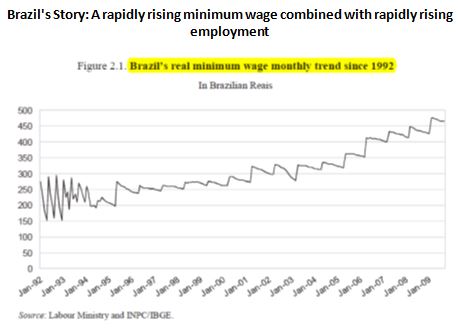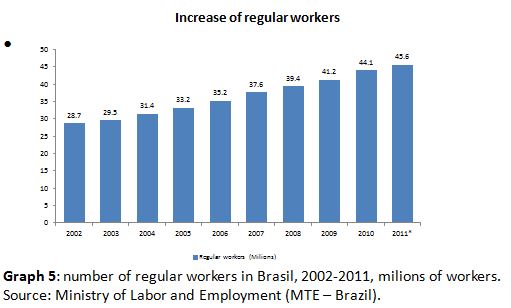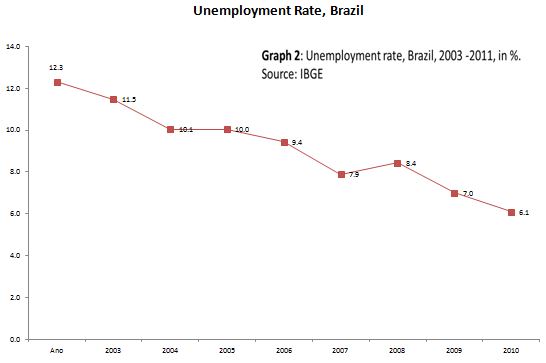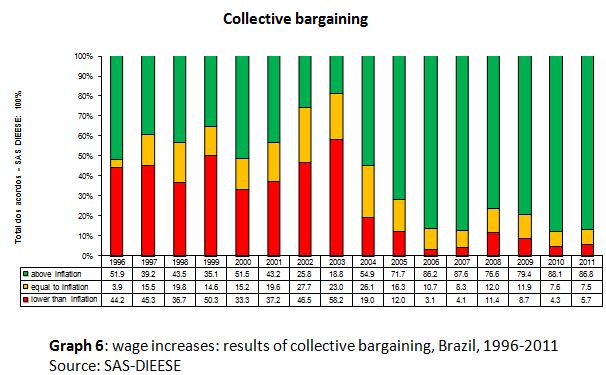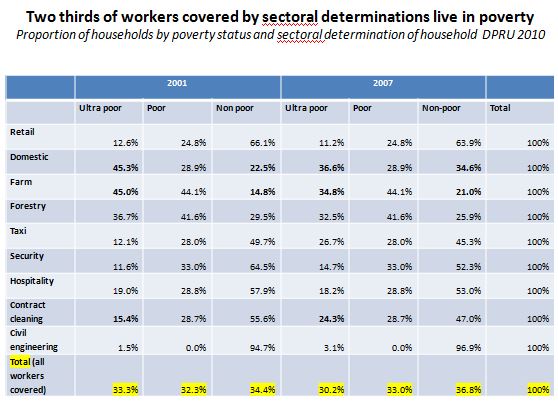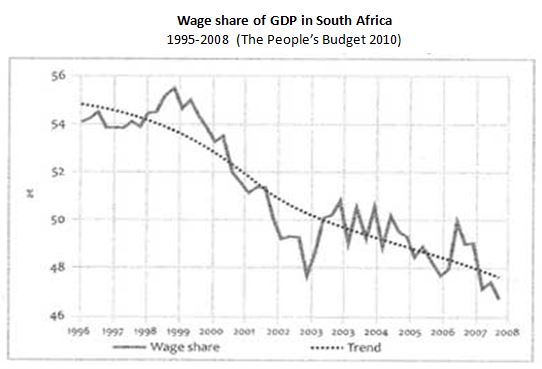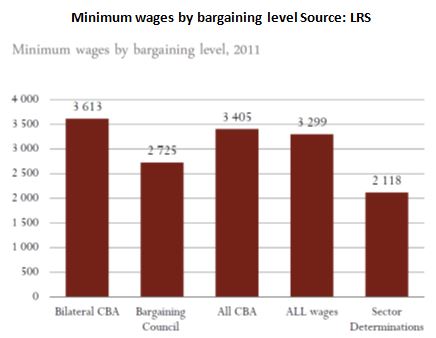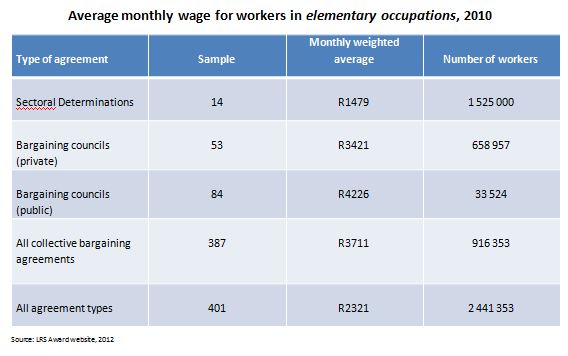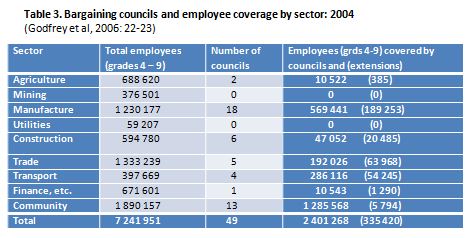Neil Coleman, COSATU, Presentation to JOINT CONSULTATIVE FORUM FOR BARGAINING COUNCILS, March 8 2013
Towards new collective bargaining, wage and social protection strategies
The current debate
May 2012- COSATU Discussion Paper recognising that major challenges emerging for labour relations, and certain structural weaknesses in current dispensation.
Proposes various policy options to address these
Subsequently, broader environment post Marikana has confirmed concerns on bargaining and wages
Status of document- discussion phase
2012 COSATU Congress- decision to convene major conference to discuss transformation of collective bargaining and wage policy. Bargaining conference next week.
Happening in context of unprecedented attacks on bargaining system, by employers & free market ideologues
Welcome public input into discussion.
COSATU CEC paper- Summary of proposals
Context: Failure to fundamentally transform apartheid labour market. Leading to growing stresses in labour market. Crisis of collective bargaining (CB) and ultra-low wages forces us to review collective bargaining, wage and social protection strategies. COSATU May CEC paper- what shifts are required?
Drawing on the Brazilian experience, the paper proposes:
- The need to adopt a national minimum wage (NMW);
- New CB strategies are required to reconfigure the wage structure, based on comprehensive centralised bargaining;
- A campaign for universal income support for all adults;
- This package, connected to an overhaul of our macro-economic policies, could lay the basis for a national development strategy;
- In interim, a package of rescue measures is needed for crisis-hit industries.
International trends
The need for greater state intervention in wage regulation is increasingly accepted, including the need for a National Minimum Wage, and a greater state role in promoting Collective bargaining.
Growing recognition that NMW & CB are complementary, not competing interventions. They have different functions: the NMW sets a basic floor. CB deals with wages & conditions throughout the wage structure.
Recognition that unions and employers CB strategies need to become more dynamic, and linked to developmental strategies, & state needs to strengthen CB institutions
The Brazilian experience
Huge gains under President Lula (2003-10) in reducing poverty, unemployment & inequality.
Key factor is consolidation of National Minimum Wage and formalisation of labour market; combined with comprehensive social protection.
2003-8: poverty down by 20 million from 61.4 million to 41.5 million. 2003-10: National Minimum Wage increased by 81% in real terms. (G20 Policy Brief) $622 Reais in 2012 (about R2700). 17 million formal jobs created 2002-11. 2004-08: proportion of formal employment in economy increased dramatically, outpacing informal jobs by 3:1.
Improved labour inspection has improved compliance.
Contradicts idea that Minimum Wage leads to unemployment. Also see OECD p18 on labour regulation: higher overall level of LM regulation in Brazil than SA & even Brazil below OECD average.
Unions bargaining up real purchasing power of wages. No longer bargaining away rights to maintain employment.
Major part of fall in inequality (two thirds) attributed to increase in wages. Remaining gains from social safety net.
Increased incomes has fuelled domestic demand, and promoted formal employment.
Brazil's Story: A rapidly rising minimum wage combined with rapidly rising employment
***
***
***
***
Domestic Demand
The contribution of domestic demand to GDP rose from -0,5% in 2003, to 9.1% in 2010. Net external demand has been minimal or negative in terms of GDP growth
See BNDES graph "domestic market explains 2004-8 growth cycle and 2010 recovery".
Current challenges in South Africa
South Africa has no coherent wage policy
The apartheid wage structure has not been fundamentally altered: the majority of black workers, particularly in the private sector, continue to live in poverty. This is true both in the most vulnerable sectors, but also for most blue collar workers.
Half of South African workers earned below R3033 p/m in 2011 - the working poor . Rough estimates for a minimum living level (MLL) are about R4000 p/m. see p45
Minimum wages in sectoral determinations, as well as many bargaining council agreements are way below this.
DPRU: 2/3 of workers covered by SD's in 2007 were living in poverty.
Huge, & increasing, inequalities between levels of the wage structure: top, middle & bottom; & between different sectors.
Current challenges II
Post-94 creation of multitier labour market, building further on the structure of the apartheid ‘2 tier' cheap labour market: casualisation, labour broking, contracting out etc.
Undermines relative power of labour: capital, & goes with increase in profit share & decrease in wage share see graph below
LRA model of ‘self-regulation' cannot deal with this situation. Workers & unions buffeted by forces of neo-liberalism, deregulation, labour market restructuring etc.
Needs decisive state intervention
Current challenges III
Struggles of workers are largely leading to incremental improvements. While significant... not structural change.
Main exception to this has been transformation of public sector wage structure, although problems remain.
Non-wage pressures, and commodification of basic services remains a huge issue for low paid workers.
Lack of a safety net major problem for workers whose wages support the unemployed. (see table p48) Tax on workers.
Collective bargaining is facing a potential crisis, increasingly coming under attack eg clothing & engineering. Employers are putting unions under pressure to engage in concessional bargaining.
Marikana & farm workers strikes dramatises importance of centralised bargaining.
Internationally, we are seeing increasing interventions by states in the wage structure. SA has fallen behind.
Debates around wages & centralised bargaining
In face of apartheid state, SA unions developed tradition of self-regulation, rather than state intervention. As in Western Europe.
COSATU living wage conference 1991 decided to focus on sectoral bargaining, rather than adopting a NMW.
Employers preferred this approach under a democratic state, as they feared aggressive state intervention. Unions continued to support self-regulation, but within structure of mandatory CB.
But LRA compromise saw a combination of voluntarism and self-regulation. Supported by government.
Voluntarist approach failed to recognise huge power imbalance between employers & workers, especially in vulnerable sectors; & strategies which employers could adopt to undermine the unions.
Until 2012, we hadn't returned to original demand of mandatory CB; nor clearly spelt out whether we support a NMW, though resolutions seem to favour it. This matter needs to be resolved.
The National Minimum Wage
A National Minimum Wage (NMW) creates a basic wage floor, below which no-one can fall. Provides platform for union struggles for a living wage, including through Collective Bargaining
ILO approach to national minimum wages :
- 1 NMW preferred to many sectoral minimum wages ;
- Level of national minimum wages linked to concept of minimum living level;
- Solidaristic approach to reducing wage gaps;
- Mechanisms to determine differ, but governments usually have final say;
- Link with social security payments-not advised as conservative govts will use as basis to suppress NMW;
- Relationship to CB- seen as complementary.
The situation in SA
No National Minimum Wage in SA. Features of minimum wages that do exist include:
- Existence of multiple, fragmented minimum wages
- Low levels of the minimum wages
- Lack of a poverty line or basic income floor measure
- Low levels of enforcement
- Minimum wages have a complicated relationship to collective bargaining
- Nevertheless the existing minimum wages do play some role
Minimum wages in SA
Multiple, low, minimum wages:
- Patchwork- some set through CB, including 47 Bargaining Councils (BC's); some by government through 11 sectoral determinations (SD's); and some through agreements at company level.
- Very low: rough guide of R4000 as Minimum Living Level (MLL), but in 2011 average minimum for SD's R2118; and R2725 for BC's. Only public sector, most mining, & some manufacturing pay a MW of more than R4000.
- Huge variation in MWs' between and within sectors. No coherent wage policy governing MWs.
- Sections of workforce not covered. BC's cover about 2,4 million workers; and SD's 3.5 million (5,9 million out of 10,2 million formal sector workers).
- No national approach. Fragmentation, and technocratic processes eg in ECC disadvantages workers, and assists powerful interests.
- Many workers covered by MW's getting stuck at level of very low minima & remain in poverty. Low levels of enforcement.
***
Value of a National Minimum Wage
A National Minimum Wage would be important:
- In combating wage fragmentation at bottom end, and ensuring comprehensive uniform coverage;
- In facilitating campaigns for a national wage floor as a weapon to fight working poverty;
- Because of its simplicity and clarity, every worker would be made aware of their rights;
- Current huge problem of non-enforcement would be countered. NMW easier to enforce.
- In laying the basis for more comprehensive improvements in wages & conditions through CB.
The National Minimum Wage & wage solidarity
The National Minimum Wage , combined with restructured CB, should be consciously designed as part of a South African wage solidarity model, to
- progressively increase real minimum wages, and reduce gaps in overall wage levels
- improve pay for all those in the bottom half of the wage structure.
Setting of the National Minimum Wage , and other forms of minimum wage setting (eg BC's), should be required by government, to achieve certain targets, in terms of reducing wage inequality, and meeting nationally set Minimum Living Levels.
Achievement of sectoral and company plans to promote wage solidarity should be a condition for access to certain state incentives. Eg Greater London Council requires payment of living wage by companies to be eligible for procurement by the GLC.
Employment Equity Act Section 27 should be strengthened, requiring companies to reduce income differentials .
Minimum Wages and employment
Conventional economic wisdom on trade off between MW's and employment no longer widely accepted. See box p38 on major movement among economists to reject this line. nLatin American experience refutes this in practice.
In SA, DPRU study found after introduction of higher minimum wages through SD's, employment increased by over 650 000 workers, from 3,45 million to 4,1 million, (2001 to 2007), despite large decrease in farm worker jobs
Employment performance explained by various economic factors, beyond introduction of a minimum wage. Sectoral conditions, industrial strategy, trade dynamics & broader economic conditions, have key role in determining how sector performs. Wage policy must be combined with appropriate macro & sectoral policies to have the desired employment impact.
Cost of not having a NMW
Now seeing huge cost of not having a NMW floor which is progressively improved
Both social cost, & impact on productivity of economy- low wage, low productivity nexus
Damage to workers and externalisation of costs. See Marikana, & need for NMW to be combined with social wage & social protection
Cost of conflict & damage to sectors
Both output & consumption gap, because of suppressed demand and production
NMW and collective bargaining
Complementary role: The minimum wage sets a floor. Collective bargaining improves on this wage floor in different sectors, and negotiates a wide range of benefits and improvements for workers.
In SA, confusion of the roles of these different mechanisms: trade unions struggle to use CB to defend a basic minimum wage floor, because of lack of a NMW. And minimum wage setting mechanisms ie SDs, are also used for CB in vulnerable sectors. Therefore we have a hybrid system, which fails to do justice to either element.
The ILO for this reason supports a unified NMW, and warns against proliferation of sectoral minimum wages. There is place for the two key legs of the system of wage determination. Statutory minimum wages alone can't address needs of different layers, CB by itself cannot deal with the problem of the most vulnerable and low-paid work.
Proposal is to have one NMW complementing a system of compulsory centralised bargaining. Would combat problem of fragmented statutory minimum wages, and undermining of collective bargaining. Challenge: to ensure sufficient union representivity in the most vulnerable sectors, to allow for effective collective bargaining.
International experience & CB
Crisis facing CB part of a broader international trend. Systems of CB under increasing stress as result of labour market shifts under neo-liberalism; and by the assault on worker rights following the financial crisis. Result of orchestrated growth of precarious work, decentralisation of CB, the fall in trade union density, and pressure on TUs to trade wages & working conditions for employment security.
Trend has not been uniform. Progressive governments, particularly in some countries of Latin America, but also in certain other parts of the South have asserted a growing role for collective bargaining
International experience & CB II
Where CB under attack, unions have embarked on:
- concessional bargaining- unions trade basic conditions, and wages, in the face of this pressure. Short term concessions often become long term.
- temporary measures to ensure job security- in response to a crisis unions negotiate temporary measures, for example around working hours, to avert large scale job loss.
- an innovative long term collective bargaining agenda- in which unions develops a long term vision & bargaining strategy for a sector
- Model of voluntarism and self-regulation in Europe is under stress, as the crisis of capitalism grows in the traditional social democracies.
Emergence of Voluntarism in SA
COSATU in LRA and constitutional negotiations demanded entrenchment of comprehensive system of centralised bargaining in economy. Section 23 of constitution allows for CB, but doesn't mandate it.
COSATU Platform on Worker Rights adopted by Special Congress in 1993 states "Provision should be made in legislation to put into place centralized bargaining arrangements in each industry." In LRA discussions, labour proposed mandatory system- see p58 Para 150 proposal. "The content of the bargaining is left to the parties to resolve."
Labour unable to achieve these objectives. LRA compromise ‘promoted centralised bargaining' but dominated by a voluntarist framework. Would depend on preparedness of employers to set up centralised bargaining forums. Settle by use of power, as opposed to our LRA proposal that we "resolve through regulation, rather than the use of industrial action, the issue of levels of bargaining."
Because of its voluntarism, the LRA created an inherent instability in the system.
Failure of voluntarism
Voluntarism of LRA has failed, in establishing a comprehensive CB system. System has stagnated, and may ultimately collapse, if trends not arrested. Clothing industry scenario could confront other sectors, if no shift. Employers could:
- use the voluntarist nature of CB to either stay out of the BC, or threaten to collapse it;
- Use strategies to undermine impact of agreements, by proliferating atypical work;
- informalisation, refusal to registeretc;
- Use large scale exemptions to leave large number of workers outside the system;
- exploit these conditions, & position of workers in vulnerable sectors, to constantly push for downward variation of wages and conditions, and threaten to collapse centralised bargaining
The Clothing agreement
Concessional bargaining on wages resulted from various pressures, particularly employer threat to collapse CB. Could do this because CB is voluntary.
Sactwu has argued that solution to crisis in sector lies outside wage reduction strategies- see box p56
Drawing on international experience, should look at other temporary measures to address crisis in addition to existing government interventions.
Recent developments deepen crisis: employers state that entry level wage reductions causing problems(!) & withdrew agreement; refused to negotiate in 2012
Collective Bargaining
Attempts by clothing, engineering and other employers to undermine collective bargaining, emphasises that new approaches are needed to advance sectoral bargaining. The CB system, in its current form, has failed to meet its objectives, and a substantially restructured collective bargaining architecture is required. Current framework is overly voluntarist.
Need wall to wall centralised bargaining, & a developmental bargaining framework promoting wage equity, & alignment of CB with industrial and economic development strategies.
Patchwork Bargaining system
Unsatisfactory compromise-statutory councils in LRA. Allowed labour to trigger unilaterally with 30%. But hardly used. Limited powers eg on wages.
Unions not representative in vulnerable sectors, have rather used SD's. But agreements not binding on Minister
Patchwork of 47 BCs only covering 2,29 million workers- 20% of workers (and 1/3 grades 4-9); SD's cover 3.5 million workers; and largely failed statutory councils
4 of 9 major sectors of economy don't have a BC. Half of workers covered by BCs in public sector.
Considerable diversity in BC system- see para 157 p62
Relationship between BCs and SDs has created a hybrid system, because some sectoral determinations (eg private security, contract cleaning & civil engineering) are shaped by sector level collective agreements- ie they are negotiated
Also firm-level bargaining, but researchers claim it is declining, and BCs remain most NB bargaining vehicle
Retail main exception, where workplace agreements remain dominant. Nevertheless, parts of manufacturing where they are as much as 25% of collective agreements
Levels of bargaining- see table p 60
Bargaining council system
At same time researchers claim a decline in company and plant level bargaining.
BCs weaker or stronger? Consolidation into bigger BC's in some instances. However, trend towards stagnation, with BC's actually declining in private sector (coverage down 70 000 since 2004) after having increased significantly from 1996-2004. Also collapse or deregistration of a number of councils. Godfrey (2006) argues that BCs may be teetering on brink of crisis.
Researchers indicate contrasting trends- see paras 161-2. But ILO estimate of 4% decline between 2002-8 see para 159
Both those commentators supporting voluntarism & those supporting compulsory bargaining agree that LRA has failed to achieve objective of comprehensive CB. Therefore change necessary.
Alternative strategies
Making centralised bargaining mandatory. Unless architecture changes from current voluntarist system, pressures undermining centralised bargaining are only likely to increase.
Would need to be combined with a far more effective programme of enforcement, as in Brazil, which also complemented this with other strategies, eg to fight against atypical work, informalisation and non-registration of employers.
See Box 8, p67 on Latin America showing high level of CB coverage eg 60% in Argentina & Brazil, & 100% in Uruguay, despite low union density
CCMA study proposes idea of commission on key labour market challenges, including this one, p70 para 181. This has pro's- development of coherent strategy; & con's- danger of excessive delays.
Implementing new approach would need transitional strategy to move from current system to proposed new system, para 182 p70
Even if architecture changed, much more needs to be done to make the system work
Government will need to support BC's better, set up the necessary sectoral architecture, & police the system effectively.
Unions need a co-ordinated national CB strategy, linked to a coherent wage policy, to address current challenges, and exploit gains which will accrue from an overhaul in the system. Para 167
Organised business needs to be challenged to bring business on board, & mechanisms put in place both to compel compliance, but also incentives to participate.
Overcome CB strategies which entrench existing labour market structure See para 168
Strategic options
CCMA study raised 3 options to strengthen the CB system:
The first route relies on efforts of DOL and employer and union parties, rather than on amendments to LRA. Programmes by DOL support BCs and Minister takes a more flexible approach to ‘sufficient representivity'. Also parties to councils improve representivity.
Second route relies on duty to bargain enforced by the courts: Labour Court would be empowered to issue an advisory ‘order' regarding the level at which bargaining would take place. Could introduce something like conciliation boards to support bargaining arrangements that fall short of BC requirements
Third route proposes compulsory centralised bargaining: The Minister prescribes sectors for CB. Policy could then be developed to promote CB in each sector, and include determination of thresholds of representivity for bargaining. Possibility of greater alignment of SETA's to CB, & greater co-ordination with them
Could also be variations of these options- see para 174
Strategic Options II
Initial assessment of the options:
Option 1- retains the model of voluntarism, which has failed
Option 2- seems overly complex & suggests excessive role for courts
Option 3- may be opposed by some as unravelling the 'carefully crafted ' LRA compromise. However, we argue that voluntarist LRA model has been tried for 16 years, & has failed to meet its objectives. We are prepared to pursue the approach of self-regulation, but only within a different architecture of regulated collective bargaining. Option 3 seems to come closest to COSATU's historical demands, and responds to the weaknesses of the current system.
Issues requiring further debate & clarity- see para 176
Strategic options III
We need to consider how to bring business to the table in terms of a restructured system. International experience suggests that decisive action by the state, through interventions which apply to all employers, is more likely to be accepted than a system with numerous loopholes, as currently. The other side of the coin is providing incentives and benefits to employers to be in the system
Du Toit et al (1995) made the important suggestion in the last days of the industrial council system that small firms could be induced to join party employers' organisations by the state channelling a range of incentives through industrial councils, e.g. "assisted access to procurement markets", "access to finance...", "tax incentives and specialised tax rates", "access to targeted assistance programmes", that would be accessible only if the firm complied with various policies, including being registered with an industrial council and being a member of a party employers' organisation (Du Toit et al, 1995: 63). This approach could be updated to current conditions, to harness the councils as economic development institutions, and to maximise employer participation.
Summary
In summary, elements of a new collective bargaining model should include
-wall to wall and mandatory sectoral bargaining
-coherent demarcation and definition of national sectors, to replace the current patchwork arrangement
-alignment of sectoral bargaining with sectoral developmental strategies, industrial policy, skills, retirement funds etc
-an explicit mandate to address wage and income inequalities
- creation of powerful collective bargaining institutions inter alia using economic levers of state
- negotiation of sectoral frameworks, supplemented by workplace bargaining
- well resourced structures backed up by effective state programmes to formalise and regulate the labour market.
Issued by COSATU, March 10 2013
Click here to sign up to receive our free daily headline email newsletter

